Saks Fifth Avenue 2008 Annual Report Download - page 65
Download and view the complete annual report
Please find page 65 of the 2008 Saks Fifth Avenue annual report below. You can navigate through the pages in the report by either clicking on the pages listed below, or by using the keyword search tool below to find specific information within the annual report.-
 1
1 -
 2
2 -
 3
3 -
 4
4 -
 5
5 -
 6
6 -
 7
7 -
 8
8 -
 9
9 -
 10
10 -
 11
11 -
 12
12 -
 13
13 -
 14
14 -
 15
15 -
 16
16 -
 17
17 -
 18
18 -
 19
19 -
 20
20 -
 21
21 -
 22
22 -
 23
23 -
 24
24 -
 25
25 -
 26
26 -
 27
27 -
 28
28 -
 29
29 -
 30
30 -
 31
31 -
 32
32 -
 33
33 -
 34
34 -
 35
35 -
 36
36 -
 37
37 -
 38
38 -
 39
39 -
 40
40 -
 41
41 -
 42
42 -
 43
43 -
 44
44 -
 45
45 -
 46
46 -
 47
47 -
 48
48 -
 49
49 -
 50
50 -
 51
51 -
 52
52 -
 53
53 -
 54
54 -
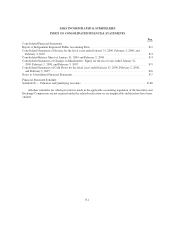 55
55 -
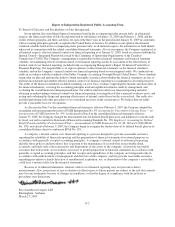 56
56 -
 57
57 -
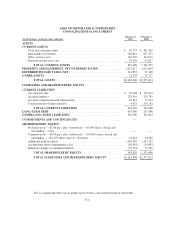 58
58 -
 59
59 -
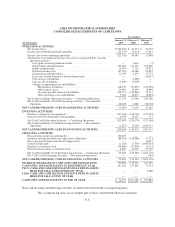 60
60 -
 61
61 -
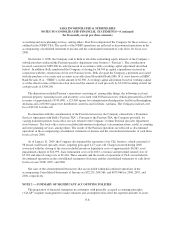 62
62 -
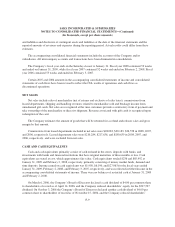 63
63 -
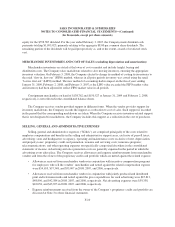 64
64 -
 65
65 -
 66
66 -
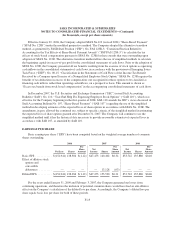 67
67 -
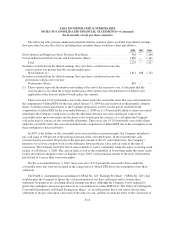 68
68 -
 69
69 -
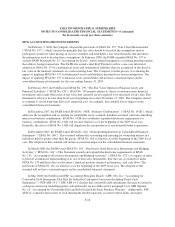 70
70 -
 71
71 -
 72
72 -
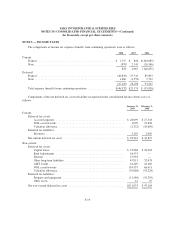 73
73 -
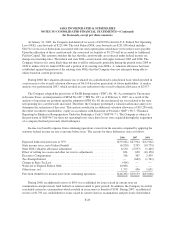 74
74 -
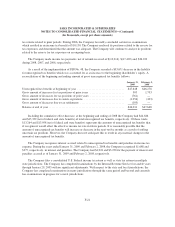 75
75 -
 76
76 -
 77
77 -
 78
78 -
 79
79 -
 80
80 -
 81
81 -
 82
82 -
 83
83 -
 84
84 -
 85
85 -
 86
86 -
 87
87 -
 88
88 -
 89
89 -
 90
90 -
 91
91 -
 92
92 -
 93
93 -
 94
94 -
 95
95 -
 96
96 -
 97
97 -
 98
98 -
 99
99 -
 100
100 -
 101
101 -
 102
102 -
 103
103 -
 104
104 -
 105
105 -
 106
106 -
 107
107 -
 108
108 -
 109
109 -
 110
110 -
 111
111 -
 112
112 -
 113
113 -
 114
114 -
 115
115 -
 116
116 -
 117
117 -
 118
118 -
 119
119 -
 120
120 -
 121
121 -
 122
122 -
 123
123 -
 124
124 -
 125
125 -
 126
126 -
 127
127 -
 128
128 -
 129
129 -
 130
130 -
 131
131 -
 132
132 -
 133
133 -
 134
134 -
 135
135 -
 136
136 -
 137
137 -
 138
138 -
 139
139 -
 140
140 -
 141
141 -
 142
142 -
 143
143 -
 144
144 -
 145
145 -
 146
146 -
 147
147 -
 148
148 -
 149
149 -
 150
150 -
 151
151 -
 152
152 -
 153
153 -
 154
154 -
 155
155 -
 156
156 -
 157
157 -
 158
158 -
 159
159 -
 160
160 -
 161
161 -
 162
162 -
 163
163 -
 164
164 -
 165
165 -
 166
166 -
 167
167 -
 168
168 -
 169
169 -
 170
170 -
 171
171 -
 172
172 -
 173
173 -
 174
174 -
 175
175 -
 176
176 -
 177
177 -
 178
178 -
 179
179 -
 180
180 -
 181
181 -
 182
182 -
 183
183 -
 184
184 -
 185
185 -
 186
186 -
 187
187 -
 188
188 -
 189
189 -
 190
190 -
 191
191 -
 192
192 -
 193
193 -
 194
194 -
 195
195 -
 196
196 -
 197
197 -
 198
198 -
 199
199 -
 200
200 -
 201
201 -
 202
202 -
 203
203 -
 204
204 -
 205
205 -
 206
206 -
 207
207 -
 208
208 -
 209
209 -
 210
210 -
 211
211 -
 212
212 -
 213
213 -
 214
214 -
 215
215 -
 216
216 -
 217
217 -
 218
218 -
 219
219 -
 220
220 -
 221
221 -
 222
222 -
 223
223 -
 224
224 -
 225
225 -
 226
226 -
 227
227 -
 228
228 -
 229
229 -
 230
230 -
 231
231 -
 232
232 -
 233
233 -
 234
234 -
 235
235 -
 236
236 -
 237
237 -
 238
238 -
 239
239 -
 240
240 -
 241
241 -
 242
242 -
 243
243 -
 244
244 -
 245
245 -
 246
246 -
 247
247 -
 248
248 -
 249
249 -
 250
250 -
 251
251 -
 252
252 -
 253
253 -
 254
254 -
 255
255 -
 256
256 -
 257
257 -
 258
258 -
 259
259 -
 260
260 -
 261
261 -
 262
262 -
 263
263 -
 264
264 -
 265
265 -
 266
266 -
 267
267 -
 268
268 -
 269
269 -
 270
270 -
 271
271 -
 272
272 -
 273
273 -
 274
274 -
 275
275 -
 276
276 -
 277
277 -
 278
278 -
 279
279 -
 280
280 -
 281
281 -
 282
282 -
 283
283 -
 284
284 -
 285
285 -
 286
286 -
 287
287 -
 288
288 -
 289
289 -
 290
290 -
 291
291 -
 292
292
 |
 |
SAKS INCORPORATED & SUBSIDIARIES
NOTES TO CONSOLIDATED FINANCIAL STATEMENTS—(Continued)
(In thousands, except per share amounts)
STORE PRE-OPENING COSTS
Store pre-opening costs primarily consist of rent expense incurred during the construction of new stores and
payroll and related media costs incurred in connection with new store openings and are expensed when incurred.
Rent expense is generally incurred for six to twelve months prior to a store’s opening date.
PROPERTY AND EQUIPMENT
Property and equipment are stated at historical cost less accumulated depreciation. For financial reporting
purposes, depreciation is computed principally using the straight-line method over the estimated useful lives of
the assets. Buildings and improvements are depreciated over 20 to 40 years while fixtures and equipment are
primarily depreciated over 3 to 15 years. Leasehold improvements are amortized over the shorter of their
estimated useful lives or their related lease terms, generally ranging from 10 to 20 years. Terms of leases used in
the determination of estimated useful lives may include renewal periods at the Company’s option if exercise of
the option is determined to be reasonably assured at the inception of the lease. Costs incurred for the
development of internal computer software are capitalized and amortized using the straight-line method over 3 to
10 years. Costs incurred in the discovery and post-implementation stages of internally created computer software
are generally expensed as incurred.
When constructing stores, the Company receives allowances from landlords. If the landlord is determined to
be the primary beneficiary of the property, then the portion of those allowances attributable to the property
owned by the landlord is considered to be a deferred rent liability, whereas the corresponding capital
expenditures related to that store are considered to be prepaid rent. Allowances in excess of the amounts
attributable to the property owned by the landlord are considered leasehold improvement allowances and are
recorded as deferred rent liabilities that are amortized over the life of the lease. Capital expenditures are reduced
when the Company receives cash and allowances from merchandise vendors to fund the construction of vendor
shops.
On a yearly basis and as changes in circumstances arise, the Company evaluates the recoverability of its
property and equipment based upon the utilization of the assets and expected future cash flows, in accordance
with SFAS No. 144. Write-downs associated with the evaluation are reflected in Impairments and Dispositions in
the accompanying consolidated statements of income.
IMPAIRMENTS & DISPOSITIONS
The Company continuously evaluates its real estate portfolio and closes individual underproductive stores in
the normal course of business as leases expire or as other circumstances indicate. The Company also performs an
asset impairment analysis at each fiscal year end. During the year ended January 31, 2009, February 2, 2008 and
February 3, 2007, the Company incurred charges of $11,139, $4,279 and $5,676, respectively, related to asset
impairments and other costs in the normal course of business.
OPERATING LEASES
The Company leases stores, distribution centers, and administrative facilities under operating leases. Store
lease agreements generally include rent holidays, rent escalation clauses and contingent rent provisions for
F-11
